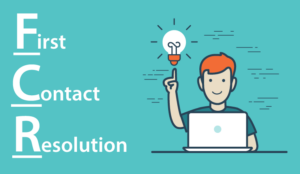Celia Cerdeira at Talkdesk shares six essential strategies to help companies optimize contact centre performance and improve customer satisfaction.
Contact centres serve as the frontline of customer service, playing a crucial role in resolving issues and answering questions. Enhancing performance can significantly boost customer satisfaction.
But that is easier said than done. What actions should companies take to elevate contact centre performance? What helps agents hit key performance indicators and ensure every customer interaction is a positive one?
To tackle these questions head-on, consider these six straightforward strategies as a first step for improving contact centre performance.
How Should Companies Optimize Contact Centre Performance?
Optimizing a contact centre means making it more efficient, effective, and high-performing. The goal is to streamline processes, make the best use of resources, boost agent productivity, and ultimately enhance customer satisfaction.
1. Use Generative AI for Self-Service
Imagine if customers could get answers to their questions instantly without having to wait on hold or navigate through a maze of menu options.
That’s the magic of generative AI. By integrating AI-powered chatbots into a company’s contact centre, they can offer efficient self-service options that let customers handle simple issues on their own.
Think of it like having a smart, reliable assistant available 24/7. Whether it’s resetting a password, checking order status, or finding product information, AI chatbots can handle these tasks effortlessly. This frees up agents to tackle more complex problems that require a personal touch.
Not only does this improve contact centre efficiency, but it also enhances the overall customer experience. Customers get quick, accurate responses without the wait, leading to higher satisfaction.
2. Expand Customer Contact Channels With Omnichannel Engagement
Today’s customers are all about convenience and choice. They might start a conversation on social media, follow up with an email, and then call for more detailed support. They expect companies to keep up with them, no matter which channel they choose, making omnichannel engagement crucial.
For example, a customer could reach out on X (Twitter) with a quick question, and then follow up via email for more details.
With omnichannel engagement, agents will have all the previous interactions at their fingertips, ensuring continuity and personalized support. The end result makes the customer feel valued and understood while boosting their overall satisfaction and loyalty.
Adopting this strategy shows customers that a company is there for them, wherever they are. It’s about meeting them on their terms and making their lives easier.
3. Directly Integrate CRM Alongside Contact Centre Software
What if contact centre agents could have all the customer information they need right at their fingertips; no more switching between systems or digging through old emails? That’s the power of integrating a company’s CRM with its contact centre software.
When merging these two systems, it’s easy to streamline operations and boost productivity. Agents can see a complete history of each customer’s interactions, preferences, and past issues, allowing them to provide personalized and efficient service.
Instead of starting from scratch each time, they can pick up right where the last conversation left off.
4. Train Agents to Foster Authentic Customer Relationships
Consider the last time someone had a really great customer service experience. Chances are, it wasn’t just because their problem was solved – it was because the agent made them feel heard and valued. That’s the power of well-trained agents who know how to build authentic customer relationships.
Effective training programs are key to making this happen. When agents are well trained in communication skills, product knowledge, and empathy they’re better equipped to handle inquiries with confidence and care.
They can listen to customers, understand their needs, and provide personalized, meaningful interactions that leave a lasting positive impression.
5. Route Calls Directly to the Most Qualified Agents
When calls are directed to the right agents from the get-go, customers receive the best possible assistance on their first interaction.
It’s like being paired with the perfect match for a problem. This not only solves issues faster but also makes the whole experience smoother and more satisfying for the customer.
First-contact resolution (FCR) rates skyrocket because customers aren’t being shuffled around. They get their questions answered and problems solved quickly, reducing the need for multiple follow-ups. Plus, agents can work more efficiently, focusing on what they do best.
6. Focus on First Contact Resolution Rate
Nobody likes having to call customer service multiple times for the same issue. That’s why focusing on first contact resolution is so important. It’s all about resolving customer problems in a single interaction, which makes everybody’s life easier.
FCR is a key metric that shows how well a company’s contact centre is performing. High FCR means agents are doing a great job solving issues right away, which leads to happier customers and fewer repeat calls. It’s a win-win.
To boost FCR, start by giving agents the right tools and information. This means easy access to customer data, comprehensive knowledge bases, and real-time support from supervisors. When agents have everything they need at their fingertips, they can tackle issues more effectively and efficiently.
For more tips on improving FCR and making customers even happier, check out our internal guide on improving first contact resolution.
This blog post has been re-published by kind permission of Talkdesk – View the Original Article
For more information about Talkdesk - visit the Talkdesk Website
Call Centre Helper is not responsible for the content of these guest blog posts. The opinions expressed in this article are those of the author, and do not necessarily reflect those of Call Centre Helper.
Author: Talkdesk
Published On: 2nd Sep 2024 - Last modified: 22nd Oct 2024
Read more about - Guest Blogs, Celia Cerdeira, Talkdesk






 Talkdesk is a global customer experience leader for customer-obsessed companies. Our contact center solution provides a better way for businesses and customers to engage with one another.
Talkdesk is a global customer experience leader for customer-obsessed companies. Our contact center solution provides a better way for businesses and customers to engage with one another. 












